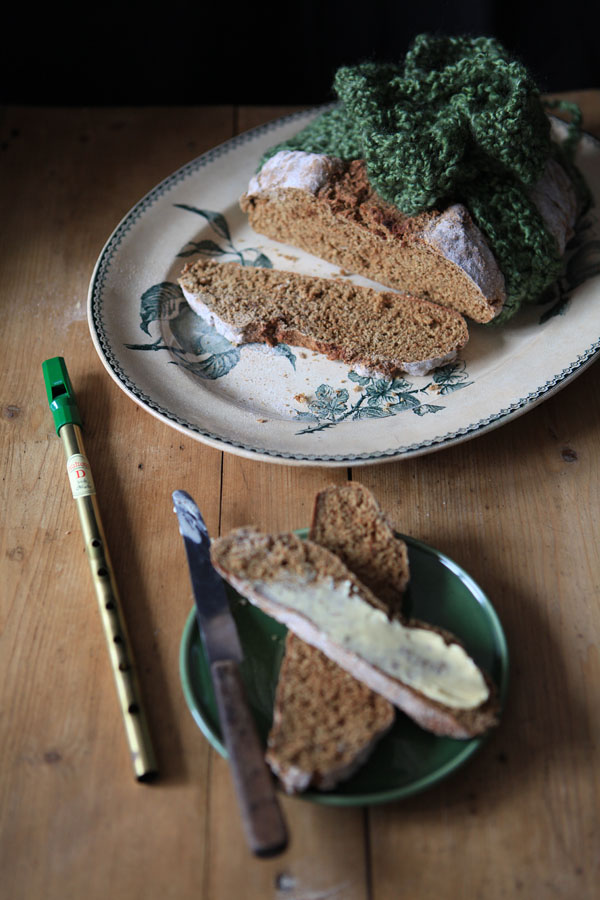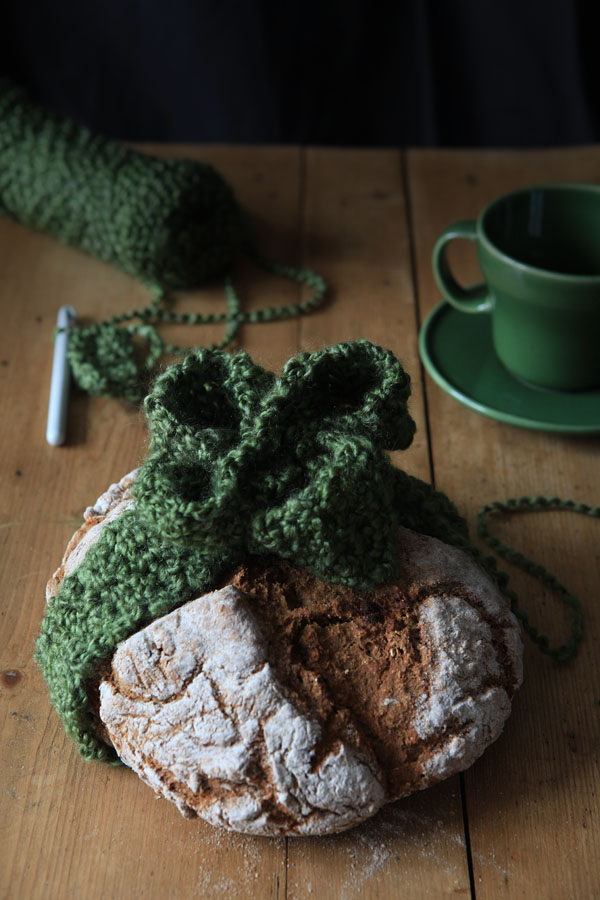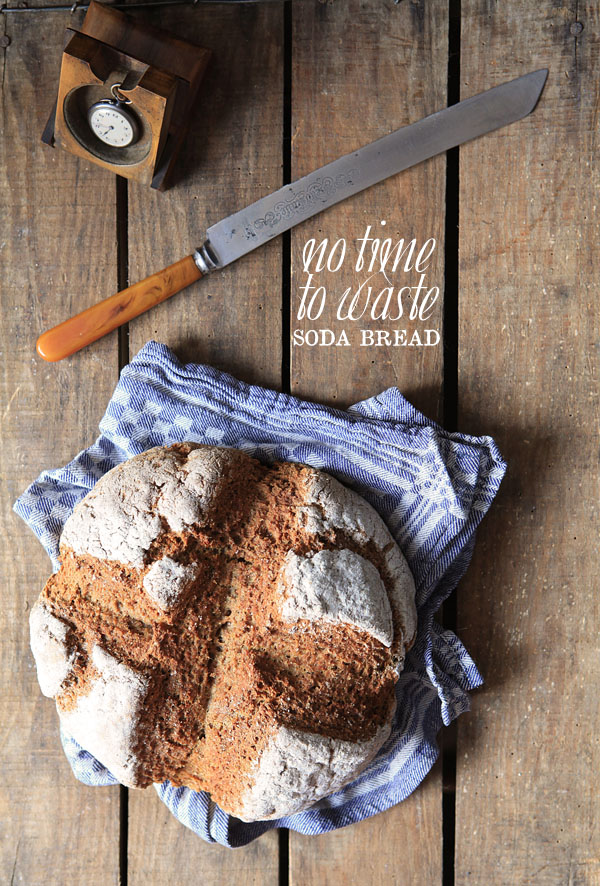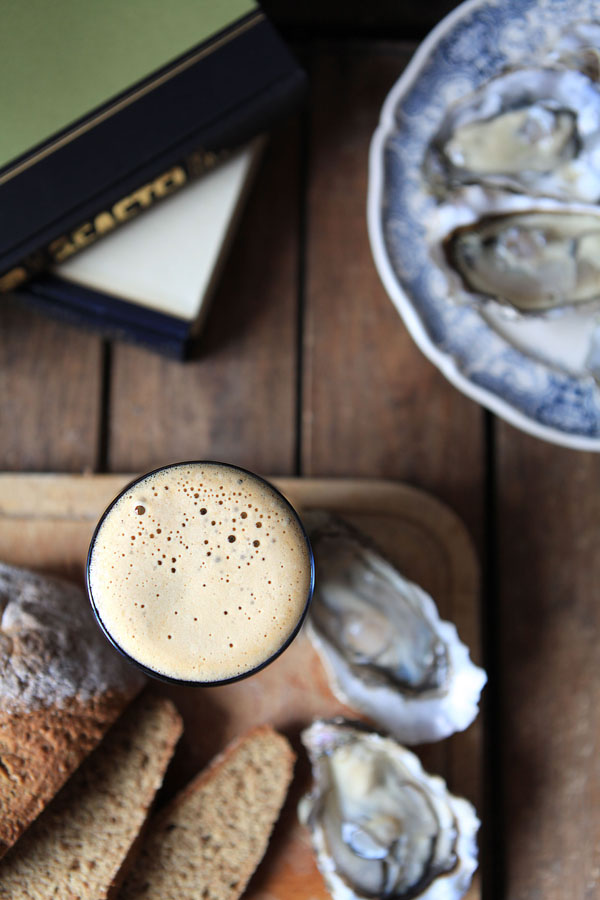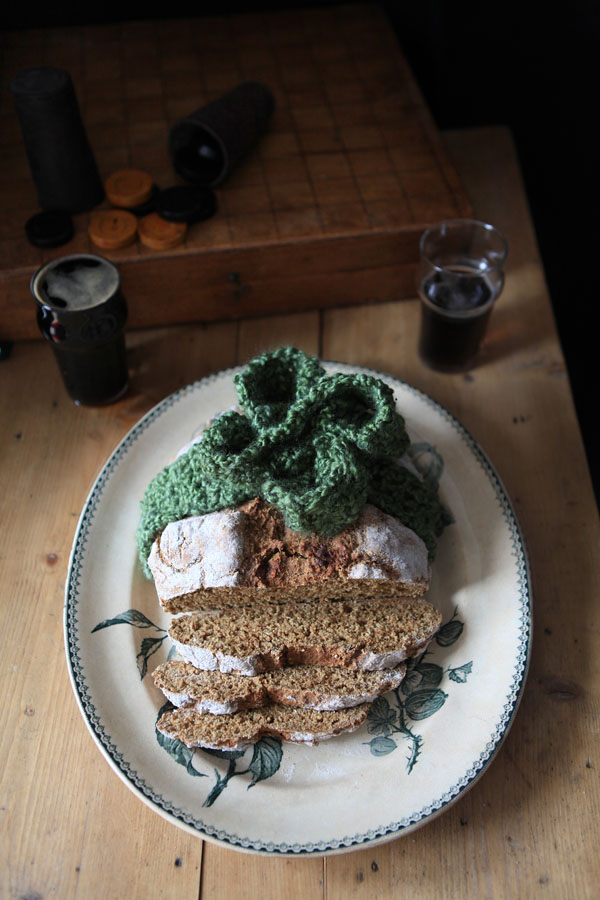 |
| A lucky shamrock scarf for your bread, to keep your hands flour-free. It’s been years since I crocheted! |
I was asked by Honest Cooking online food magazine to share a St-Patrick’s day recipe with them. I’ve never been in Ireland so therefore St-Patrick’s day is something I only know from visiting the Irish pubs that used to be plenty in Antwerp. The day would be advertised on the pubs blackboards weeks in advance offering live music and a Paddy’s special menu. When the day finally came, the Irish folk living in Antwerp and the Irish sailors who were docked at Antwerp port with their ships would gather at the pubs to enjoy a pint and a meal, you would hear the traditional Irish folk music from behind the corner along with loud and often drunken sing-alongs. In Antwerp you most certainly knew when it was St-Patrick’s day … But as the Irish pubs started to disappear, the St-Patrick’s day celebrations and the taste of Irish food went with them.
Wheaten Stout Beer, Oats and Molasses
What do you need
• 500g/17oz. good quality – organic wholemeal wheat or spelt flour
• 1/2 cup / 4oz.rolled oats
• 2 teaspoons of baking soda
• 1 teaspoon of sea salt
• 3 teaspoons of molasses
• 200ml/6.7 oz stout beer and 200 ml/6.7 oz live yoghurt
• some extra flour to dust
Method
- Preheat your oven to 190C/375F
- Line a baking tray with greaseproof paper
- Combine the flour, baking soda and salt well in a bowl.
- Add yoghurt and stout and mix with the dry ingredients.
- Quickly form a wet dough – it is important to get the bread in the oven as quickly as possible and not to overwork it – if the dough is too wet dust with flour until you can shape it.
- Dust it with flour and cut a cross in the dough half way down the dough.
- Put on the baking tray in the middle of the oven for 40 minutes.
- The bread is ready when it makes a hollow sound when you knock on the bottom.
- Cool on a wire rack
I like to place a small container of water with the bread in the oven, the moisture will help the bread get a tender crumb.
Best eaten when still slightly warm, spread with butter and with a piece of bitter dark chocolate …
 |
| The Irish Times pub in Antwerp, is no longer. There had been an Irish pub on this site since the 40’s |
You might also like
Soda bread – a loaf in 45 minutes

